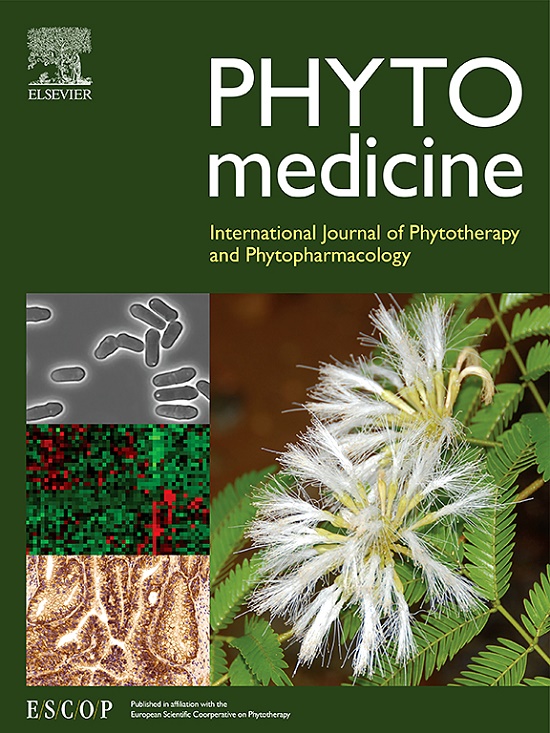Sanzi Yangqin Decoction improved acute lung injury by regulating the TLR2-mediated NF-κB/NLRP3 signaling pathway and inhibiting the activation of NLRP3 inflammasome
IF 6.7
1区 医学
Q1 CHEMISTRY, MEDICINAL
引用次数: 0
Abstract
Background
Acute lung injury (ALI) is a serious respiratory ailment marked by dysregulation of the immune dysregulation and an inflammatory reaction.Currently, effective treatment options for ALI are limited. Sanzi Yangqin Decoction (SZYQ) is a traditional formula used clinically to treat respiratory diseases, although its effects on ALI have not yet been fully elucidated.
Purpose
This research seeks to elucidate the pharmacodynamic material basis of SZYQ within the context of lipopolysaccharide (LPS)-induced ALI, thereby establishing a robust foundation for considering SZYQ as a possible intervention for improving ALI.
Methods
The chemical constituents of SZYQ were identified by UHPLC-QTOF-MS. The pharmacological mechanism of SZYQ on ALI was preliminarily investigated through network pharmacology. An ALI model induced by LPS was employed to evaluate the efficacy of SZYQ via histopathological analysis and other methodologies. Transcriptomic analysis of lung tissue from ALI mice was conducted to uncover the potential mechanisms underlying SZYQ's effects. Additionally, LPS was used to induce murine alveolar macrophages (MH-S), creating an in vitro ALI model; siRNA was introduced to further validate the pharmacological mechanisms of SZYQ's protective effects on ALI.
Results
This study identified a total of 37 chemical components within SZYQ, and network pharmacology results indicated that these components exert their effects via the Toll-like receptor pathway. The protective effects of SZYQ on ALI are manifested by the modulation of the immune response and the reduction of lung epithelial barrier damage. Transcriptomics, western blot, flow cytometry, and siRNA experiments demonstrated that SZYQ can inhibit levels of TLR2, p-NF-κB/NF-κB, p-IκB/IκB, p-IKKα/IKKα, MyD88, NLRP3, Caspase-1 and ASC. Furthermore, SZYQ was observed to reduce the release of reactive oxygen species (ROS), suppresses inflammasome activation, as well as decrease the incidence of cell pyroptosis.
Conclusions
This article demonstrated for the first time that SZYQ can enhance ALI through immune regulation. The proposed mechanism of action involved the TLR2-mediated NF-κB/NLRP3 signaling pathway and the inhibition of NLRP3 inflammasome activation.

求助全文
约1分钟内获得全文
求助全文
来源期刊

Phytomedicine
医学-药学
CiteScore
10.30
自引率
5.10%
发文量
670
审稿时长
91 days
期刊介绍:
Phytomedicine is a therapy-oriented journal that publishes innovative studies on the efficacy, safety, quality, and mechanisms of action of specified plant extracts, phytopharmaceuticals, and their isolated constituents. This includes clinical, pharmacological, pharmacokinetic, and toxicological studies of herbal medicinal products, preparations, and purified compounds with defined and consistent quality, ensuring reproducible pharmacological activity. Founded in 1994, Phytomedicine aims to focus and stimulate research in this field and establish internationally accepted scientific standards for pharmacological studies, proof of clinical efficacy, and safety of phytomedicines.
文献相关原料
公司名称
产品信息
索莱宝
LPS
阿拉丁
β-mercaptoethanol
 求助内容:
求助内容: 应助结果提醒方式:
应助结果提醒方式:


